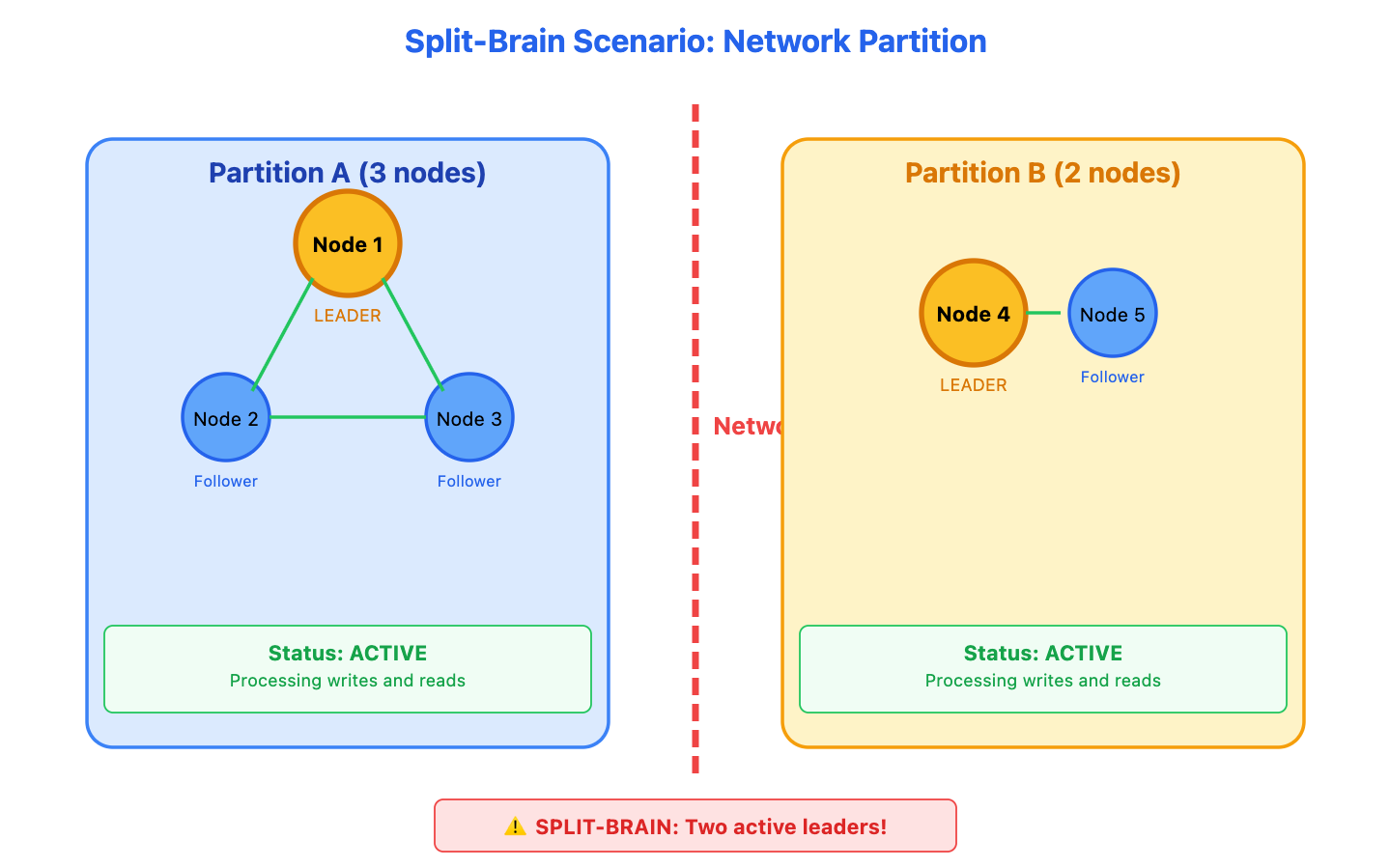Split-Brain Problem: Prevention and Resolution
Issue #67: System Design Interview Roadmap
The Phantom Menace of Distributed Systems
Picture this: Your database cluster is humming along perfectly when suddenly, a network partition strikes. Within seconds, two separate groups of nodes each believe they're the rightful leader, both accepting writes, both convinced the other side has failed. Welcome to the split-brain problem—one of the most insidious failure modes in distributed systems that can silently corrupt your data while appearing to work perfectly fine.
Unlike obvious failures that trigger alerts and wake up engineers, split-brain scenarios often masquerade as normal operation until someone discovers conflicting data weeks later. By then, reconciling the divergent state becomes a nightmare that can take systems offline for hours or even days.
Understanding the Split-Brain Phenomenon
The split-brain problem occurs when a distributed system's nodes become divided into separate partitions, each believing they constitute the majority and should continue operating independently. This leads to multiple active leaders simultaneously making conflicting decisions.
[📍 Split-Brain Scenario Visualization] Show network partition with two groups, each having their own leader



